A CHILD SNATCHING ON CLASSON (1875)
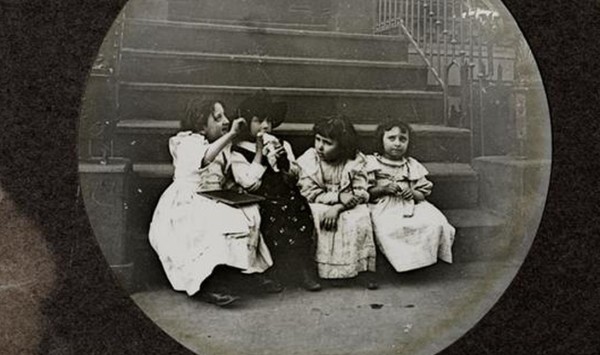
******************************************************************************************************************************** Brownstone Detectives investigates the history of our clients’ homes. The story you are about to read was composed from research conducted in the course of one of those investigations. Do you know the history of YOUR house? ******************************************************************************************************************************** He was “large.” He was “repulsive looking.” And he wanted to steal a child. And so, when Michael Kelly, of No. 22 Franklin Avenue, heard the joyous amusements of a number of young children upon a stoop at No. 208 Classon Avenue, he was resigned that he should have one. Ascending to where they were, he seized little Josephine Carter, aged 3 years, and “despite her cries of alarm, began a hasty retreat.” As he reached the bottom step and turned to flee down the walkway, little Josephine’s head knocked violently against the iron railing, causing her to cry all the more loudly. The children who remained on the stoop, “their playmate having been removed so from their midst, were all terrified, and began to cry in concert.” This crying attracted the attention of a Mrs. Hartley, who resided next door at No. 206 Classon. She, “supposing there had been an accident of some sort, hastened to the street just in time to see Kelly running off with the little girl.” THE CHASE “Very pluckily she followed him for nearly half a block and finally overtook him. Demanding the instant release of the child, she wanted to know why he was carrying it away.” Kelly, though, pretended to be deaf and […]
THE “GOODFELLAS” OF CUMBERLAND STREET
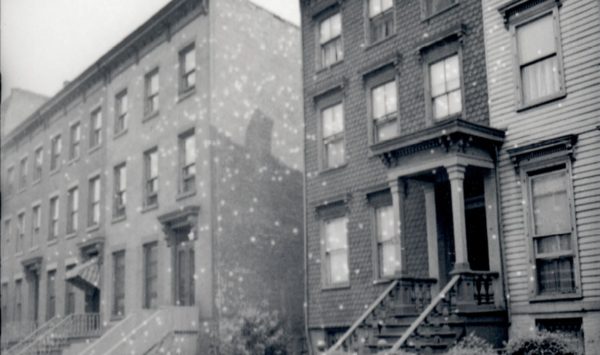
One of the Brownstone Detectives’ first House History Books, No. 231 Cumberland Street: The Story of a House, tells the story of an 1852 antebellum frame home just steps from Fort Greene Park. It’s an action-packed tome, replete with treachery, “poudrette,” “small art,” SROs, and the gangland figures from “Goodfellas.” Here is a brief timeline of the history of this single landmarked property, matched up with “spreads” from the book: THE HISTORY OF A BROOKLYN HOUSE The land beneath which No. 231 would someday rise, started out as a tobacco farm owned by the first Italian immigrant to New York, Pietre Cesare Alberti. The farmland would eventually be built upon in 1851-2, when builder John Ross constructed a row of three homes there. First owned by a woman with a tragic history, a melodrama involving treachery, another man, and an infant daughter – which became the gossip of the newspapers of the time – No. 231 was rented out throughout the the 1850s and 1860s, in addition to many returning Civil War veterans, to merchants and their small families. One of those merchants featured prominently in the founding of the Lafayette Avenue Presbytery Church. Before this, however, he had begun his interesting career as a Night Soil Man – starting a company which, amongst other “agricultural” endeavors, collected human excrement from the backyard privvies of Brooklyn, selling this “compost” to Long Island farmers as the appropriately – if euphemistically – named “poudrette.” The property was then owned by an immigrant, […]
THE “SCREAM” OF MACON STREET (1907)
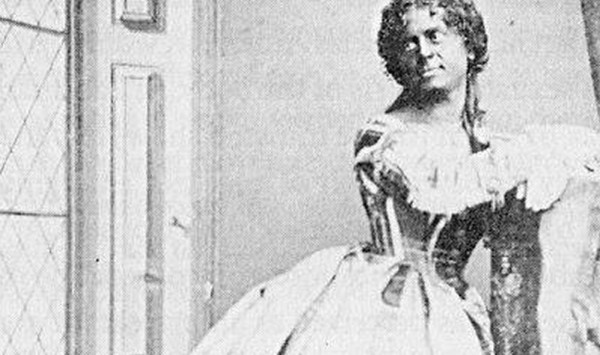
******************************************************************************************************************************** Brownstone Detectives investigates the history of our clients’ homes. The story you are about to read was composed from research conducted in the course of one of those investigations. Do you know the history of YOUR house? ******************************************************************************************************************************** Female “personators” seemed to bring out the passion in folks back in the day. Maybe there was less sexuality involved in the whole dressing-as-a-woman thing. Or maybe it was simply a matter of sexuality not mattering at all. Or, as some say, it was everything. But when “The Great Eugene” took the stage – and he took the stage always as a woman – men, in particular, seemed to find themselves singularly rapt in attention and admiration at the spell that the talented female personator was casting over them. BUILDING THE PERFECT IMPERSONATOR The Great Eugene, otherwise known simply as Eugene, was named Eugene D’ameli as a child. He was born on Manhattan in 1836, and, according to The New York Dramatic Mirror (the Broadway rag of the time), he made his first debut at the tender age of 17, playing what he would end up playing the rest of his career – a “prima donna” – a persona which “he improved and perfected until it was considered the best of its class.” His partner, “Johnny” Unsworth, of 700 Macon Street, recalled Eugene’s beginnings in the minstrel theatre. “Because he was so small and slight and built somewhat like a woman Gene started female impersonations, always in black face, as a […]
TILTING AT FLATBUSH WINDMILLS (1879)
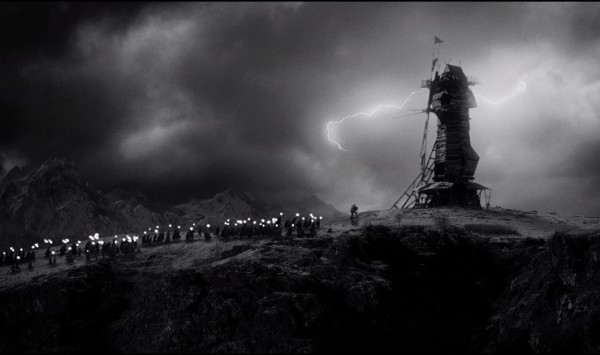
******************************************************************************************************************************** Brownstone Detectives investigates the history of our clients’ homes. The story you are about to read was composed from research conducted in the course of one of those investigations. Do you know the history of YOUR house? ******************************************************************************************************************************** It was iconic like the Williamsburg Bank building (1 Hanson Place) at Flatbush Avenue. It had stood on the same Flatbush farm for 75 years – a relic of our Dutch past and a connection to our Brooklyn roots. Most Brooklyn residents had never seen it – but everyone knew of it. It had even made such an impression on the psyche of 19th century Brooklynites that socialite Gertrude Lefferts Vanderbilt included its destruction in her book, The Social History of Flatbush. And, incredibly, it had even had a special significance to the “colored” people of New York and Brooklyn, as it was used during the Civil War draft riots of 1863 – which had spread from New York to Brooklyn – to shelter much of the city’s black population. By the late 19th century, though, it was no longer operable as a windmill. As landmarks went, however, no one could relegate the structure to any sort of second class status. It was a Brooklyn landmark through and through. But all of that changed on a single night in 1879 when, through the bottom windows, the Vanderveer windmill began to spout flames. CONFLAGRATION! The flames rose so high, filling the eastern expanse of the night’s horizon, that people in the center […]
THE NOTORIOUS DRUNKEN POLLY WALTON (1880)
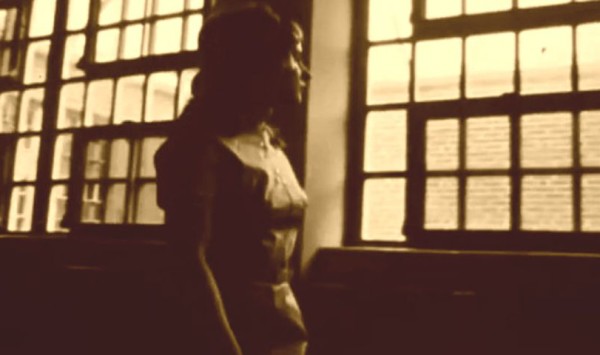
In 1879, alcoholism was practically a crime. And in many cases it was to be punished all the more severely in order that a change might be affected in its indulger. You either drank or you stopped drinking. There was precious little middle ground and relatively little pity for the alcoholic. THE CASE OF POLLY WALTON Polly Walton must have faced some difficult circumstances in her life, as she had at one time had everything – a life, a career, a husband, and two lovely daughters who had married well and were happy in their lives. For Polly, though, something had gone seriously wrong. After her husband died and her girls were married, her life had become a series of mornings awoken on the floors of jail cells, recovering from far too much alcohol and far too little memory of what had transpired the night before. Frequently in front of judges, she had gotten very good at promising them everything they wanted to hear. Polly, though, was referred to in the court system as “an old offender.” She was expected to be seen again and again, slowly moving in a downward spiral until one day she was no longer around – a faceless victim of crime which brought her to her last confinement – the city morgue. “Polly has spent at least nine-tenths of the past five years in prison as a penalty for her passion for strong drink,” so stated the Brooklyn Daily Eagle. HER DAYS IN COURT On […]
WONG SING BOW’S WHITE WIFE MINNIE (1877)
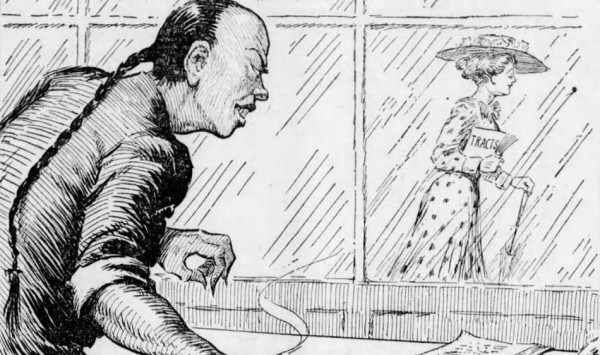
******************************************************************************************************************************** Brownstone Detectives investigates the history of our clients’ homes. The story you are about to read was composed from research conducted in the course of one of those investigations. Do you know the history of YOUR house? ******************************************************************************************************************************** In 1886, the life that Wong Sing Bow had been building up for years began to crumble before his eyes. A naturalized U.S. citizen, Wong Sing had been born “a subject of the emperor of China.” But he had been in America “long enough to save considerable money and to appreciate the beauty of Irish girls,” said one paper of the time. Wong Sing spoke English fluently and was often called upon by the authorities to interpret. With all that Wong Sing had going for him, it had originally seemed likely that he was going to have a good life. But this was the 1800s. And Wong Sing was Chinese. ANTI-CHINESE PREJUDICE IN 19TH CENTURY BROOKLYN After Wong Sing’s arrival in the U.S. around 1870, according to one paper, “the celestial youth immediately fitted himself in the groove of circumstances. “He decided to become intensely American. He shaved his cue off, doffed his Chinese garb, proclaimed his intention to become a citizen, and went to Sunday school ‘all samme like Melican man.’” Apparently, the papers, like most Americans, had no politically correct bent in those days. But the Chinese were located squarely at the bottom of the social construct – just slightly beneath the Irish and the Germans – and so […]
OL’ MAN LEFFERTS HAD A FARM, E-I-E-I-O (1874)
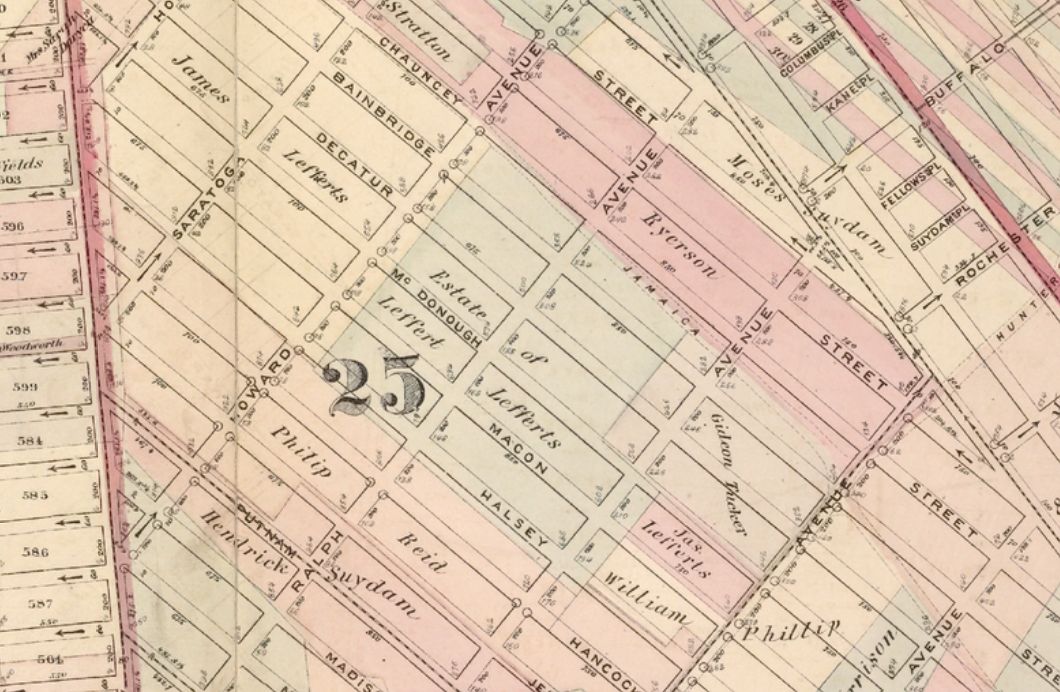
******************************************************************************************************************************** Brownstone Detectives investigates the history of our clients’ homes. The story you are about to read was composed from research conducted in the course of one of those investigations. Do you know the history of YOUR house? ******************************************************************************************************************************** Above is a section of the 1874 Beers Map of the City of Brooklyn focusing on the 25th Ward, drawn up before much was built in what would someday become the eastern section of Stuyvesant Heights. Development in this section, the 25th Ward, would intensify around the 1890s. As you can see from the map, there are a lot of names on it. They belong to the men who had previously owned the land as part of their farms. Around those names are drawn the former property lines of their farms. Thus, this map is called a “Farm Line” map. Now, if you can locate where you live on this map, you can see the name of the farmer who once owned the land your house sits on today. (If your house is not on this map, it is most certain on others. Let me know and I will help you find it – and your farmer’s name.) How many farmers you can see on this map! Follow @BrownstoneDetec Share ———————————————————————————————————————– The Brownstone Detectives Brownstone Detectives is an historic property research agency. Our mission is to document and save the histories of our clients’ homes. From our research, we produce our celebrated House History Books and House History Reports. Contact us […]
THE NO. 8 MACHINE OF FULTON STREET (1876)
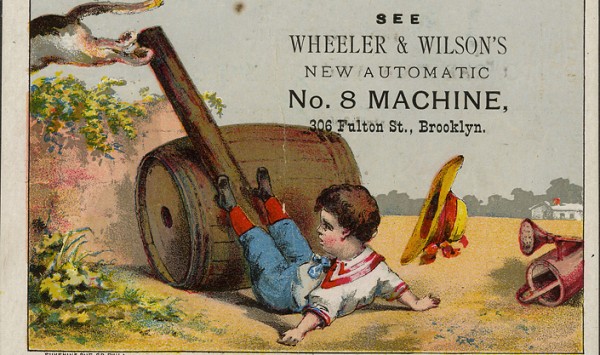
The No. 8 Machine. Such a romantic honorific. The name literally rolled off the tongue and dazzled the listener with the rhythm of its mellifluousness and style… OK. I won’t lie. It really wasn’t the sexiest of names. It sounds like a government-designed and -built outhouse. And it smells just as bad. Buyers of sewing machine back in the late 1800s, though, were really not shopping for a sexy name. They were looking for dependability and speed. Stylish sewing machines, then, were like the hotrods of the day for garment producers. Just as for the marketers of the 20th century’s Mark VI or Chrysler 300, or even the Mercedes 190-E, present-day automobile manufacturers always knew that that they “had” their buyers with their brand. They didn’t need a sexy name for their cars. They simply had to tack on the latest model number to their speed machines to let their faithful customers know that it was a new year and that they were once again out of style and out of step with the times. One of the producers of the 19th century speedster sewing machines was the Wheeler & Wilson Company. Their hotrod was the No. 8. SELLING THE NO. 8 And so with the graceful design and the smooth functioning of their No. 8 Machine, Wheeler and Wilson’s creation was on the tongues of many a manufacturer. Garment designers and clothing manufacturers literally felt something move within their hearts when they heard the No. 8 name. Wheeler and […]
A HOOSIER DADDY IN YOUR HOUSE
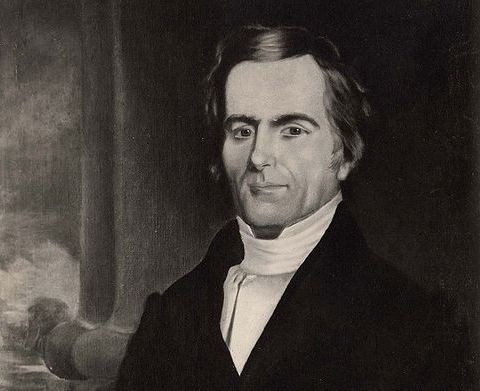
Whenever Brownstone Detectives begin researching a client’s house history, the heady rush of discovering the people who are a part of that home’s past begins to set in. Sometimes these people are formerly famous – or infamous – individuals. Or, in some instances, they had at one time been distinguished members of our society. And then, there are those who were pedestrian citizens who at one time produced families, went every morning to their jobs, and lived ordinary lives. In a recent case, after some extensive newspaper archival research and combing through documents at Indiana University, we discovered an interesting connection – a former resident, Rev. Anderson McElroy Wylie, who was a prominent Brooklyn Episcopal clergyman, in his own right, had been the son of the founding president of Indiana University, Andrew Wylie. Now, we’re not 100% certain, but wouldn’t that be the “2 Degrees of Hoosier Daddy”? ———————————————————————————————————————– The Brownstone Detectives This story was composed from research performed by The Brownstone Detectives. Let us do an in-depth investigation of your house and its former owners and produce your very own House History Book. Your hardbound coffee table book will include an illustrated and colorful narrative timeline that will bring the history of your house to life. Contact us today.